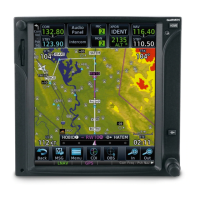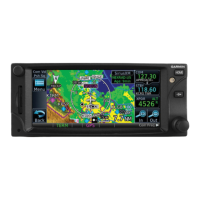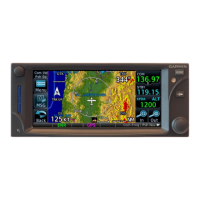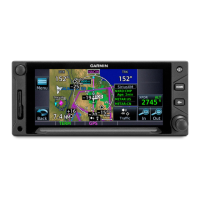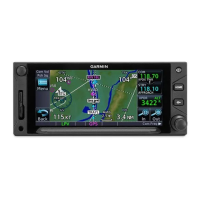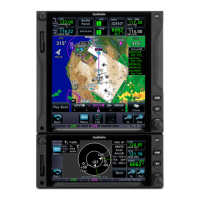11-7190-01007-03 Rev. C
GTN 725/750 Pilot’s Guide
Foreword
Getting
Started
Audio &
Xpdr Ctrl
Com/Nav
FPL
Direct-To
Proc
Charts
Wpt Info
Map
Traffic
Terrain
Weather
Nearest
Services/
Music
Utilities
System
Messages
Symbols
Appendix
Index
11.3.3 Computing GPS Altitude for TAWS
TAWS uses information provided from the GPS receiver to provide a horizontal
position and altitude. GPS altitude is derived from satellite measurements. GPS
altitude is converted to a Mean Sea Level (MSL)-based altitude (GSL altitude)
and is used to determine TAWS alerts. GSL altitude accuracy is affected by factors
such as satellite geometry, but it is not subject to variations in pressure and
temperature that normally affect pressure altitude devices. GSL altitude does
not require local altimeter settings to determine MSL altitude. Therefore, GPS
altitude provides a highly accurate and reliable MSL altitude source to calculate
terrain and obstacle alerts.
The terrain and obstacle databases used by TAWS are referenced to Mean Sea
Level. Using the GPS position and GSL altitude, TAWS displays a 2-D picture of
the surrounding terrain and obstacles relative to the position and altitude of the
aircraft. Furthermore, the GPS position and GSL altitude are used to calculate
and “predict” the aircraft’s flight path in relation to the surrounding terrain
and obstacles. In this manner, TAWS can provide advanced alerts of predicted
dangerous terrain conditions.
11.3.4 Baro-Corrected Altitude Versus GSL Altitude
Baro-corrected altitude (or indicated altitude) is derived by adjusting the
altimeter setting for local atmospheric conditions. The most accurate baro-
corrected altitude can be achieved by frequently updating the altimeter setting
to the nearest reporting station along the flight path. However, because actual
atmospheric conditions seldom match the standard conditions defined by the
International Standard Atmosphere (ISA) model (where pressure, temperature,
and lapse rates have fixed values), it is common for the baro-corrected altitude
(as read from the altimeter) to differ from the GSL altitude. This variation results
in the aircraft’s true altitude differing from the baro-corrected altitude.
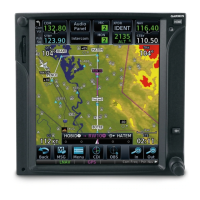
